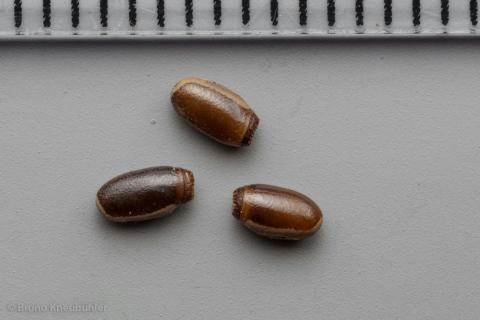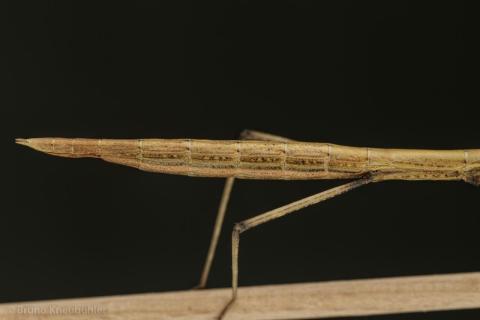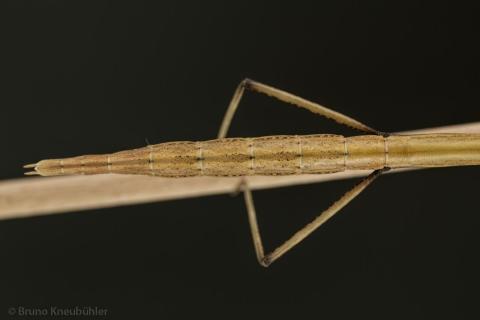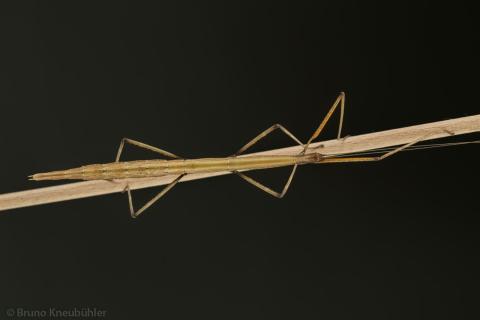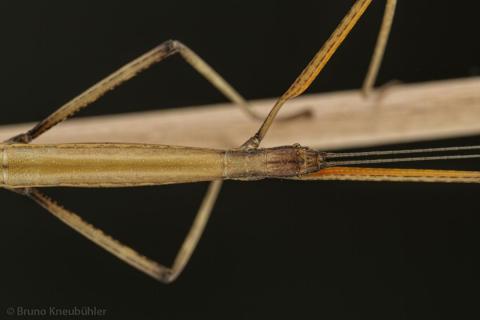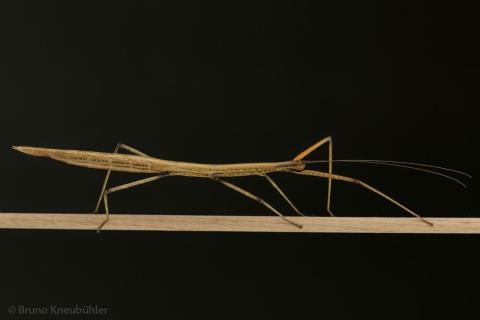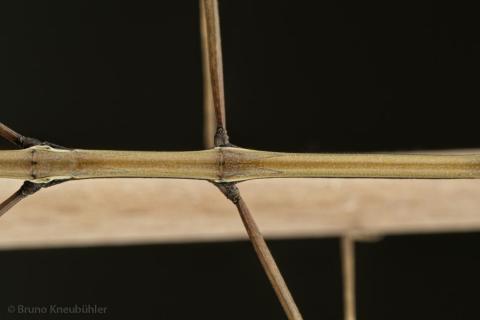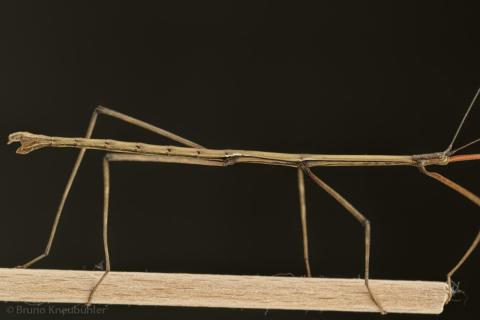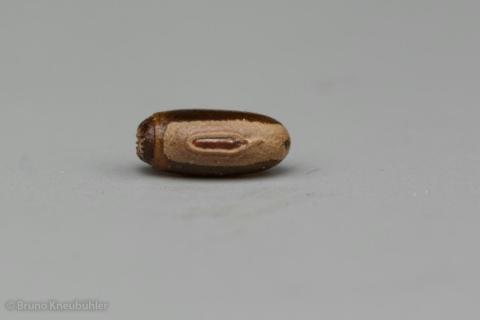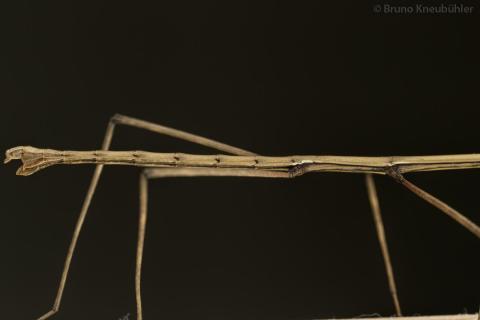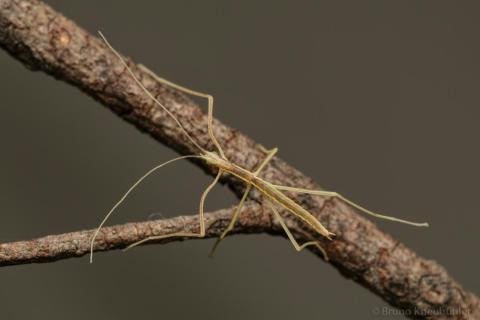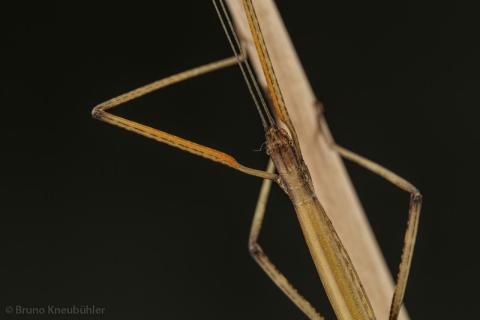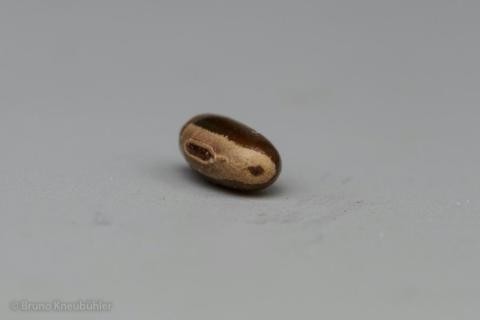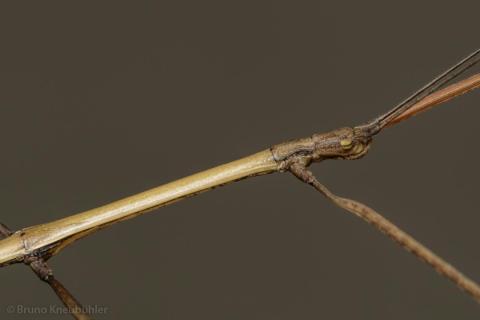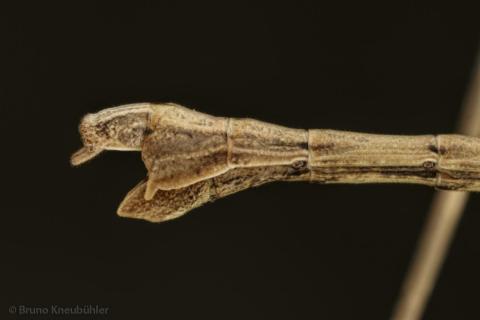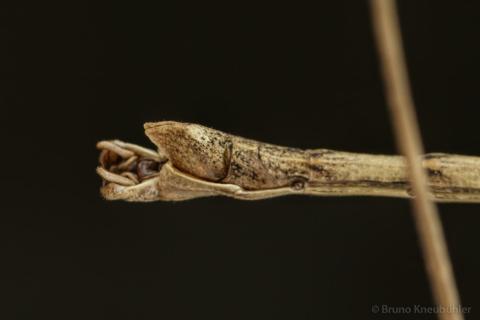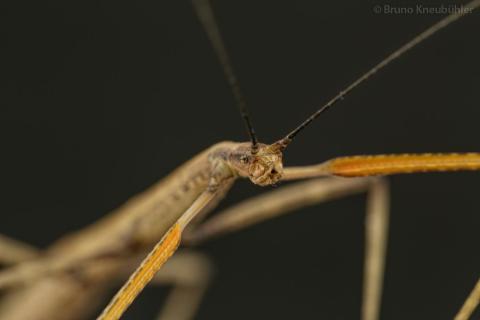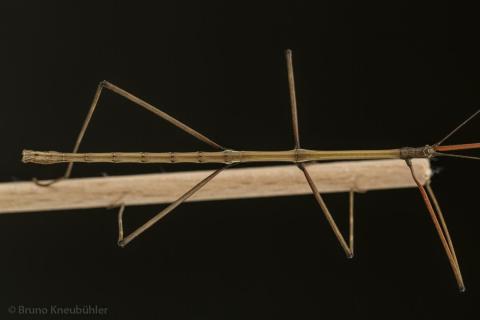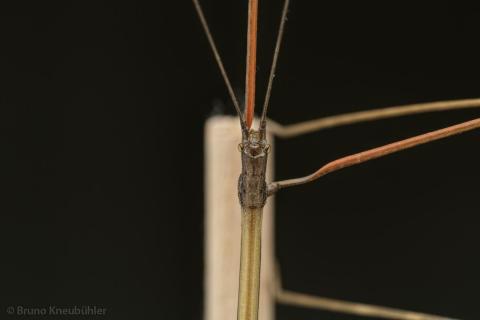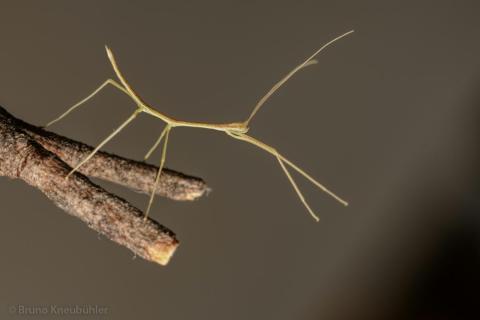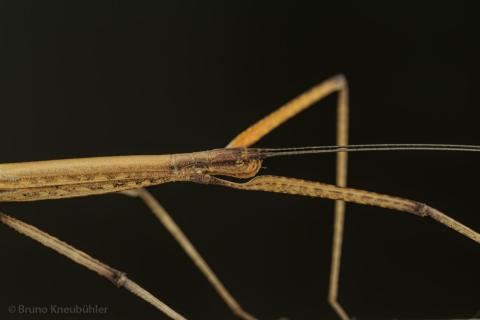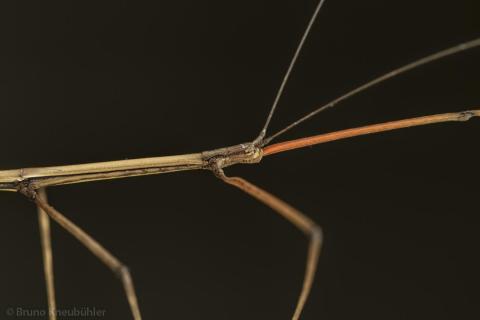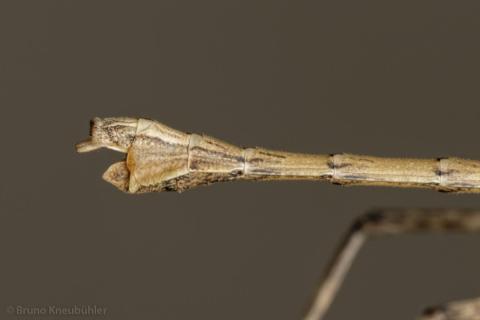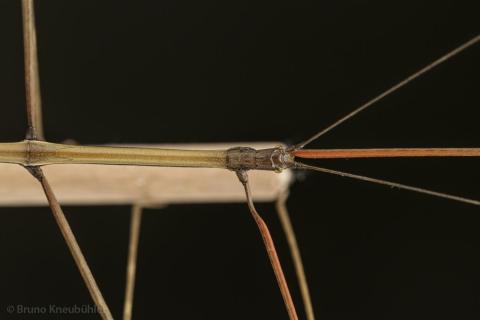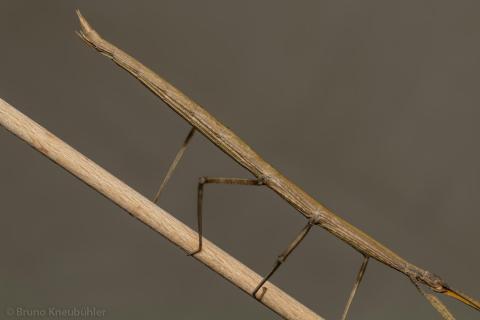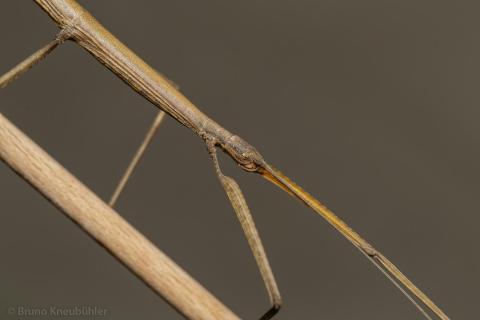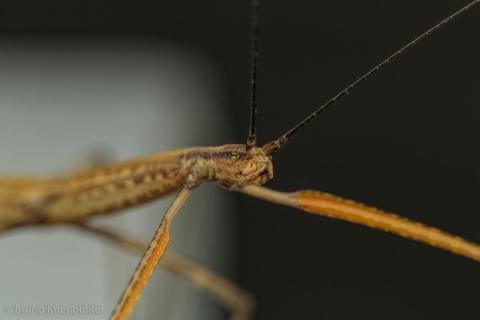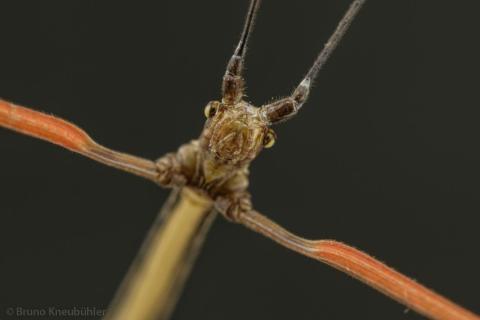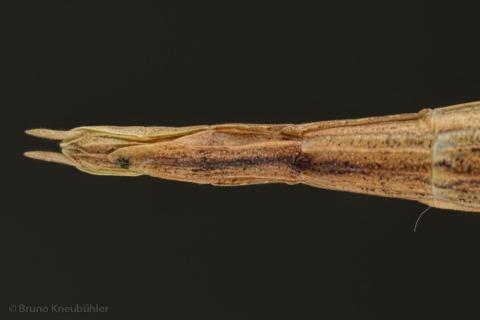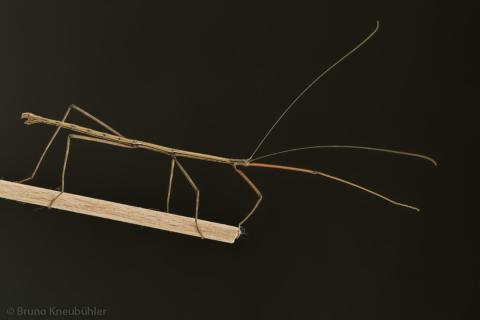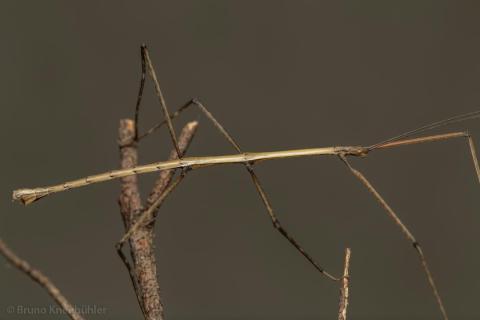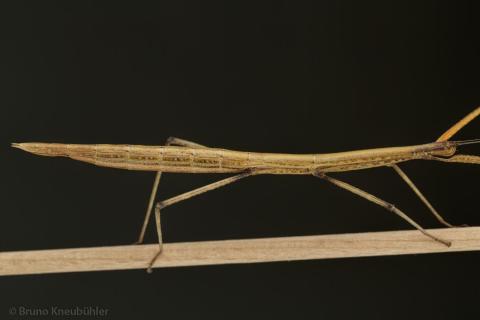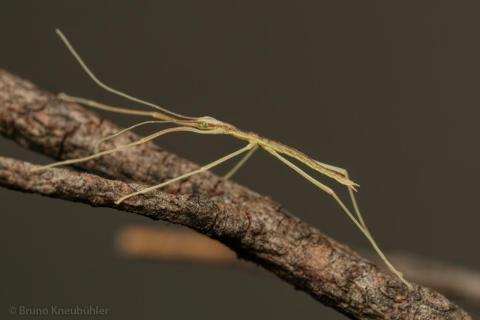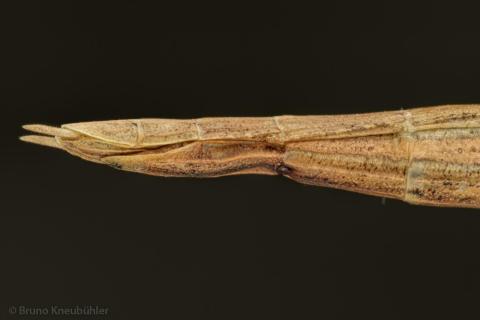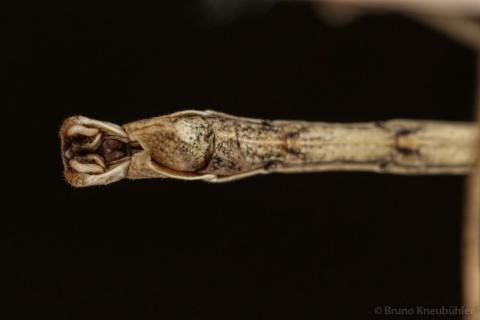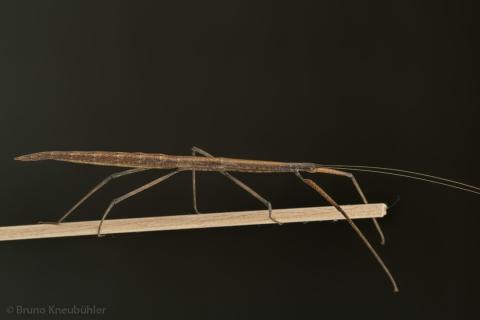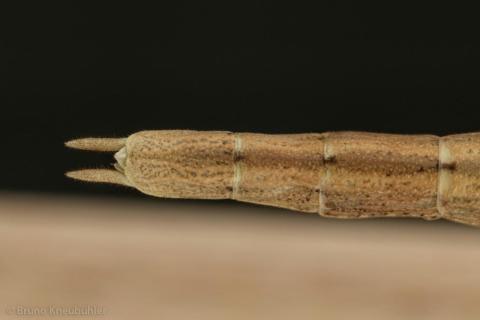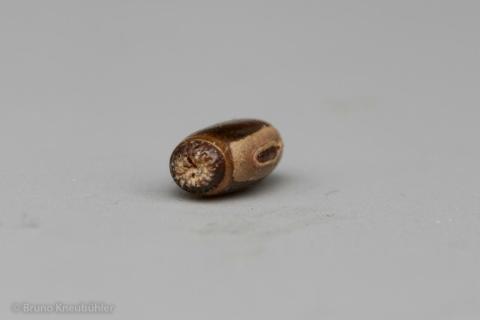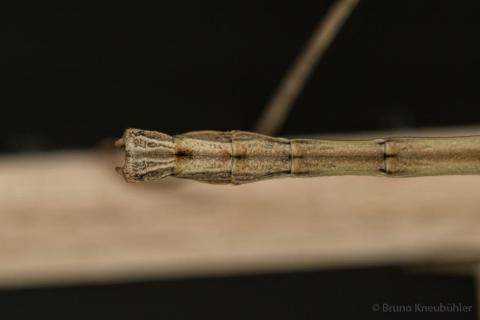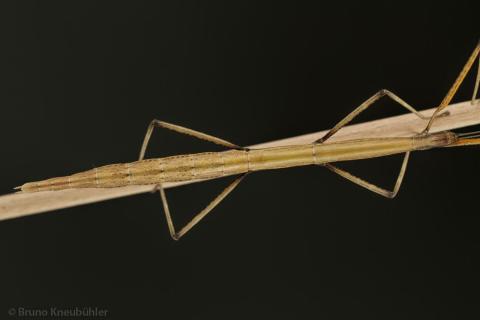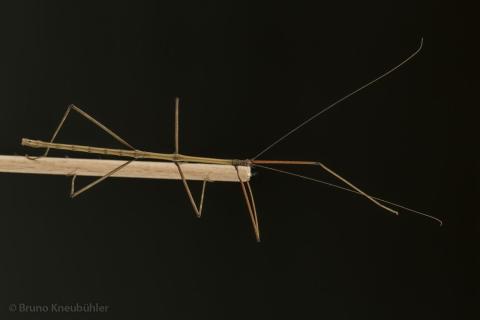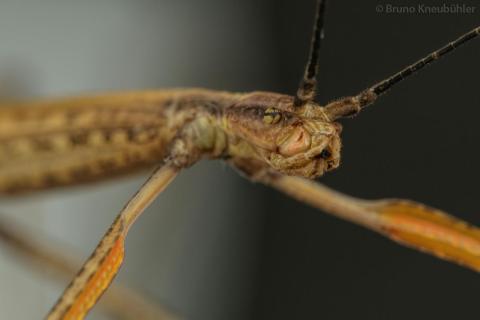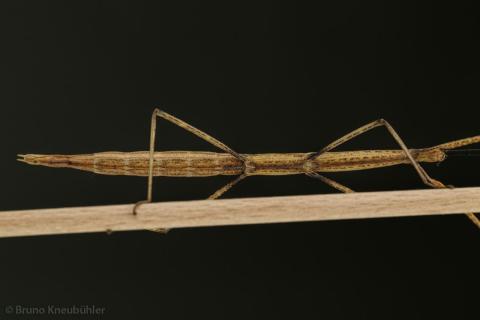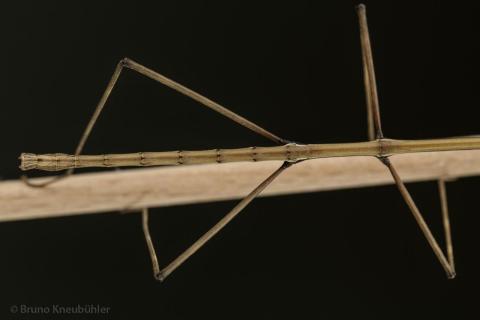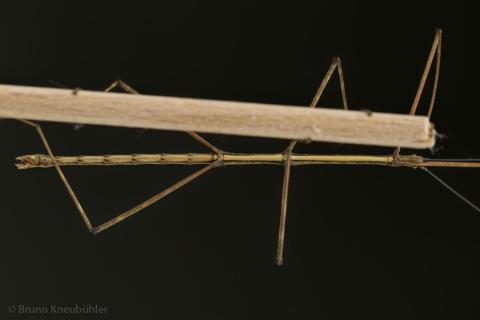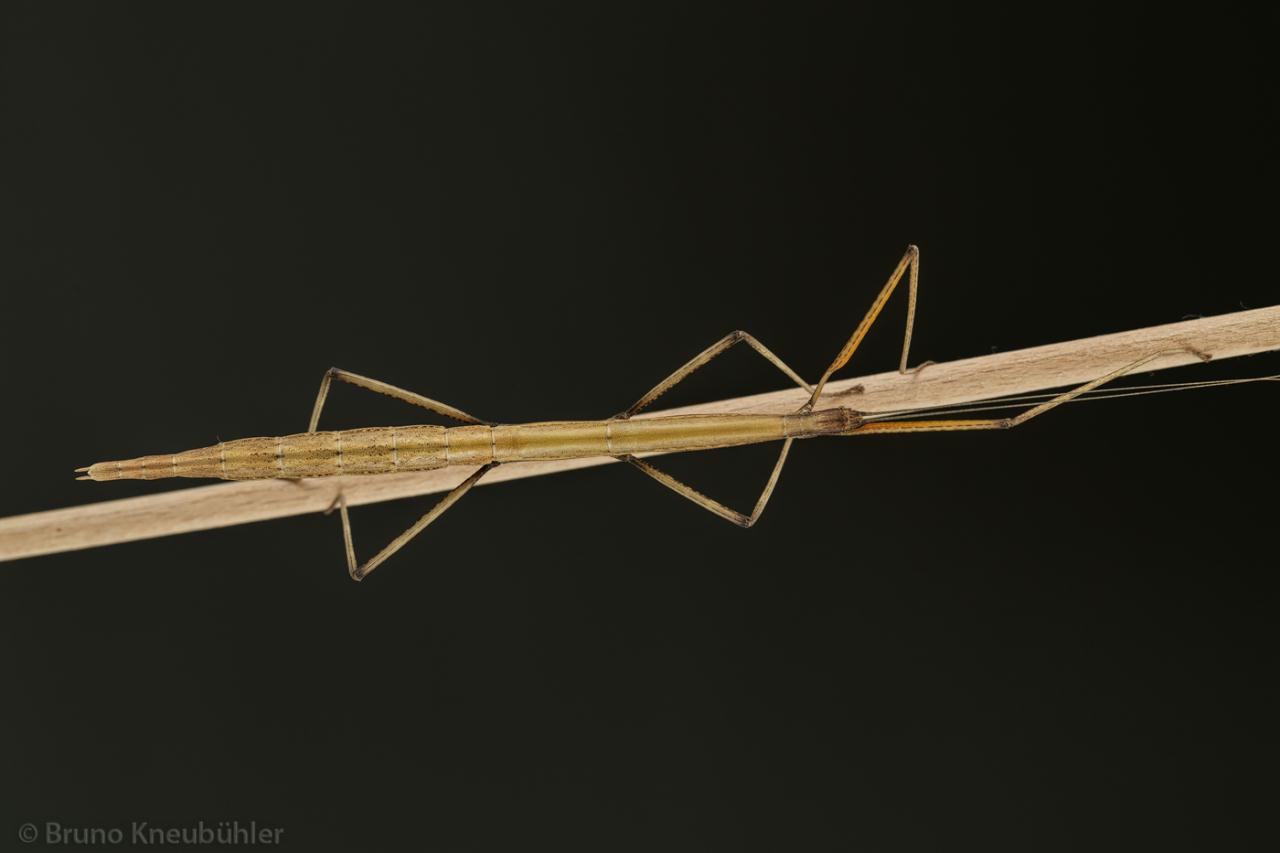
Species
CLP
792
Culture status
Probably lost
Foodplants
Hypericum spp.
Breeding notes
(by Bruno Kneubuehler)
General Informations
- provenience: Santa Cruz de la Sierra (Bolivia, Dto. Santa Cruz de la Sierra, Barrio Urubo, Puente Urubo 91)
- taxonomic evaluation by Oskar Conle (Germany), Frank Hennemann (Germany) and Pablo Valero (Spain)
- F1 CB culture in Europe by Bruno Kneubuehler (2015)
- further taxonomical informations ➤ phasmida.speciesfile.org
- this is a pure culture, and serious breeders are asked to avoid mixing this culture with similar populations from a different provenience
Females
- medium-sized, long-legged, slender species
- body length 9 - 11 cm
- light brown to dark brown
- inner side of forelegs orange
Males
- very slender, long-legged
- body length about 6 cm
- long antennae
- light brown with some dark markings
- inner side of forelegs orange
Nymphs
- freshly hatched nymphs are light brown with a brown eye-band
- about 14 mm long
- on how to distinguish between male and female nymphs
Eggs
- 3.5 x 2 mm
- brown, with a light brown band
- glossy, smooth
Food Plants
- Hypericum (Hypericum spp.)
very well accepted by nymphs and adults
Breeding, Behaviour
- active mainly during the night
- they feign death when touched
- eggs just drop to the ground
- about 25 eggs per female and week
- incubation (HH-method on slightly damp vermiculite) about 5 - 7 months at 20 - 23 °C
- males will be adult after 2 months (at 20 - 24°C), females after 2.5 months
- nymphs hatch during the night
- a humidity of about 60 - 70 % seems to be good enough for this species
- one can spray them regularly with chlorine-free water, but allow the water to dry up before spraying again
- very easy to breed
- maybe the LTD method can be applied to avoid food plant shortage in winter, but this has not been tested by me
Basics of phasmids breeding
- keep only one species per cage, overpopulation is one of the main reasons for breeding failures
- keep nymphs seperate from the adults, mainly to protect them during the crucial moulting phases
- choose the cage big enough, when in doubt it is (usually) better to choose a cage too big than too small
- a ventilator often supports good breeding results, as it seems to increase activity and feeding
- provide enough light, but avoid direct sunlight (overheating)
- try to keep day time temperatures below 25°C
- a nocturnal fall of temperature is natural, and thus advantageous
- do not spray too much, phasmids are no fish ! The water should dry up before you spray again
- minimize disturbances (loud music, commotions, light at or during the night, opening up cages in the morning [often a moulting phase] ect.)
